12 Ways to Quickly Open Task Manager in Windows 10/11
The Task Manager in Windows is required to manage everything that is currently running on the PC. Thus, whether you are a novice user or a system administrator, this is one of the main Windows tools that you need to know how to access and use.
You can use Task Manager to force close a rogue app, disable processes left behind after an app is closed, view apps running in the background, or simply view the current state of system resources.
Because Task Manager is usually accessed when an application or process crashes, it's important to know more than one way to access it. This way you won't get stuck if the process won't let you use your normal task manager access method.
For example, an application may prevent you from using a keyboard shortcut (the easiest way), in which case you will have to access it from the desktop or from the menu.
In this post, I will show you all the possible ways to open the Task Manager in Windows 10. Some of these ways may not be very convenient, but they can be useful under certain conditions, so they are worth knowing.
No. 1. Use keyboard shortcut
The easiest and fastest way to open Task Manager is to use a special keyboard shortcut. All you have to do is press the Ctrl + Shift + Esc keys at the same time and the Task Manager will appear. As long as your keyboard is working fine and nothing is stopping you from using shortcuts, this method should be your method of opening Task Manager.
#2 Use Screen Ctrl+Alt+Delete
You can also access the task manager from the GINA screen, or the CTRL+Alt+Delete screen as most people call it. Many applications (usually games) can prevent you from using the Ctrl+Shift+Esc keyboard shortcut to open Task Manager. However, the CTRL+Alt+Delete key combination will still work because it takes precedence over most processes.
Just press the Ctrl+Alt+Delete keys on your keyboard and select "Task Manager" from the list of options that appears.
Number 3. Open from Windows Power User Menu
There is also an entry for the Task Manager in the Windows 10 Power User Menu. To access it, right-click on the Start Menu button or press Windows Key + X. When the Power User Menu opens, click Task Manager to open it. This method can be useful when your keyboard doesn't work or you just want to use a mouse.
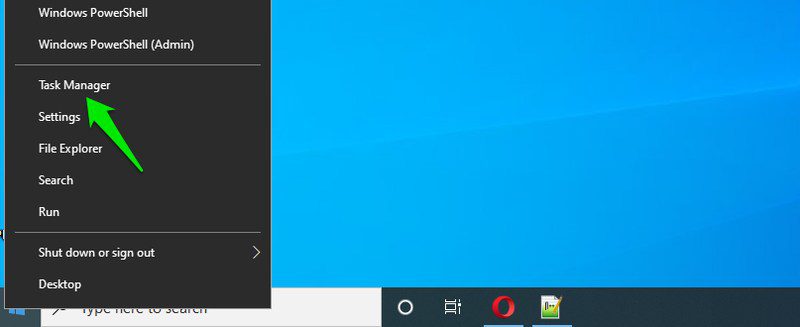
#4 Access From the Taskbar Menu
Similar to the method above, there is also an entry to access Task Manager from the taskbar menu. Right-click on any empty space on the taskbar and select "Task Manager" from the menu that opens.
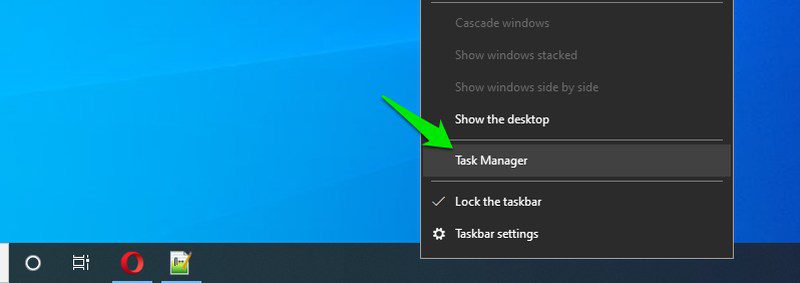
#5: Use the Run Command
There are many Run commands for accessing important Windows components, as well as one for the Task Manager. To use it, press the Windows + R keys to open the Run dialog box. Here, type taskmgrand and click OK to open Task Manager.
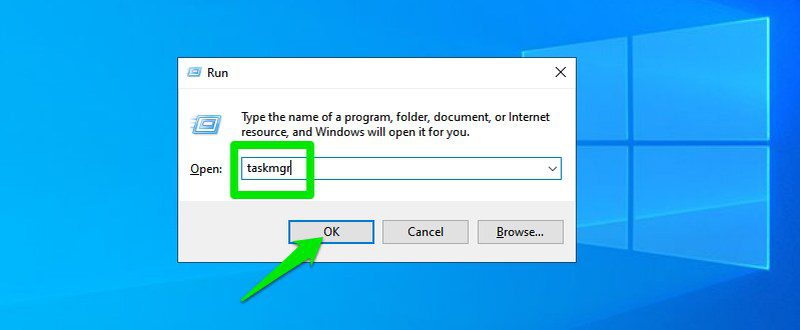
Usually, problems with Windows Explorer can force you to execute commands with the Run command to access various components. This method should help you if Windows Explorer is acting up.
#6: Run the Task Manager Executable
Task Manager actually has an executable similar to other apps you install, so you can find its executable in File Explorer and launch it from there. Open This PC (or whatever file management app you use) to access File Explorer. Here go to this location C > Windows > System32, scroll down and open the executable named Taskmgr.
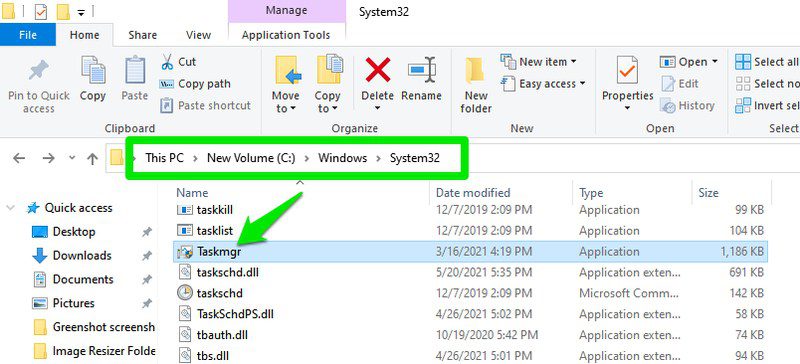
You can also type C:WindowsSystem32 in File Explorer's search bar to access this location directly. If Windows is installed in a directory other than the C drive, change to that directory instead.
No. 7. In the "Start" menu
If you prefer to open apps from the Start menu, you can also access the Task Manager from the Start menu. Click on the start menu and scroll down to the very bottom. Here, click on the "Windows System" folder and then select "Task Manager" inside it.
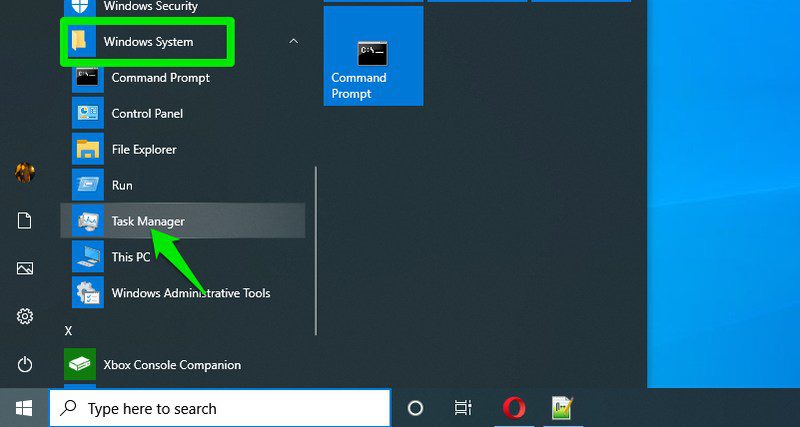
No. 8. Pin Task Manager to the Taskbar
If you want faster access to Task Manager with your mouse, you can add its executable to your taskbar to open it with a single click. You must access the task manager executable to add it to the taskbar, you can use the above methods to find the executable in File Explorer or Start Menu.
Once you find it, right-click it and select "Pin to taskbar" to add its icon to the taskbar. Like other icons on the taskbar, you can move it around and open it with a single click. If you want to unpin it, right-click on the taskbar icon and select Unpin from taskbar.

#9 Create a Desktop Shortcut for Task Manager
Similar to adding a task manager icon to the taskbar, you can also create a taskbar shortcut on your desktop for faster access. There are two ways to do this: either use the Windows shortcut wizard, or create a shortcut from the Task Manager executable in File Explorer. I'll show you both below:
To use the shortcut wizard, right-click an empty spot on your desktop and choose New > Shortcut from the shortcut menu.
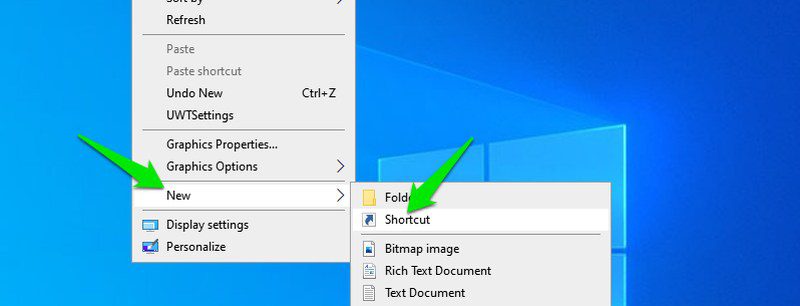
In the wizard, copy/paste this location C:WindowsSystem32Taskmgr.exe and click next.
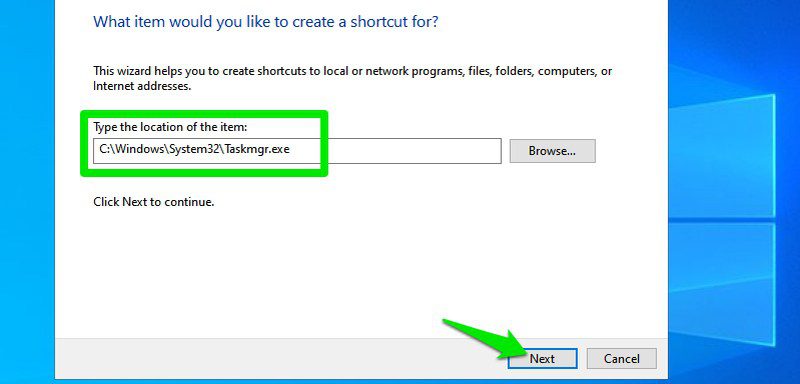
Now enter a name for the shortcut (in this case Task Manager) and click Finish.
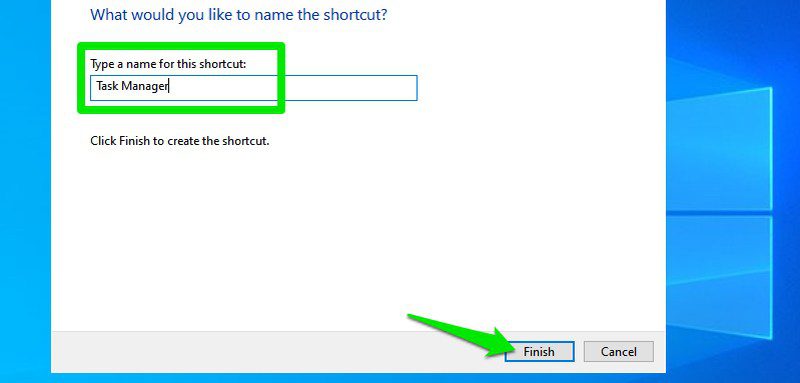
The shortcut will be created and will use the original Task Manager icon.
To create a shortcut using an executable, open the Task Manager executable from File Explorer as in method 6. After that, right-click on it and in the Send To option select Desktop. A desktop shortcut will be created.
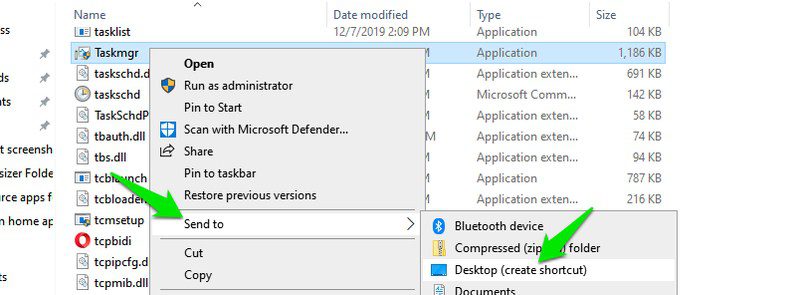
No. 10. Use Windows Search
This is a fairly obvious option, but it's still worth mentioning while we list all the possible ways. As with most other Windows components, you can type "Task Manager" into the Windows search bar at the bottom and the executable for the Task Manager will appear.
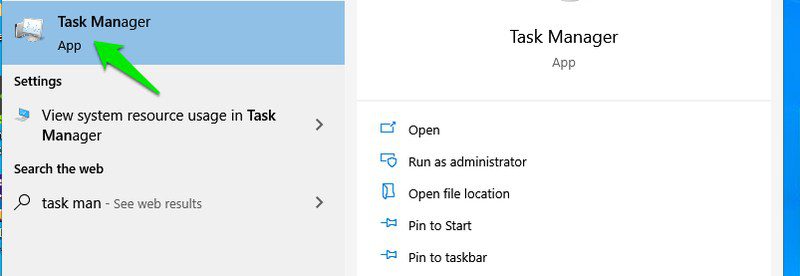
#11 Run Command Prompt or Powershell Command
If you're having a problem with your PC and need to run commands through Command Prompt or Powershell to solve it, you can use the command for Task Manager to access it if necessary.
You can access both Command Prompt and Powershell from the Windows search bar. With one of the tools open, type taskmgr in it and hit the Enter key to open Task Manager.

No. 12. From the control panel
If you are working inside the Control Panel, you can also use its search feature to access the Task Manager. To open the control panel, you can either search for it in Windows search or open the Run dialog box and type control in it.
In the Control Panel, type "Task Manager" in the search bar at the top right, and a small link to "Task Manager" will open on the left under the heading "System".

Summarizing
I usually use the keyboard shortcut to access the task manager, but I often have to use the Ctrl+Alt+Delete screen as one of the games I play doesn't allow keyboard shortcuts in full screen mode. Although I must admit that I sometimes access it through the power user menu when I'm too lazy to reach for the keyboard. I'm sure you'll find other methods useful in certain situations, or at least to play with friends.